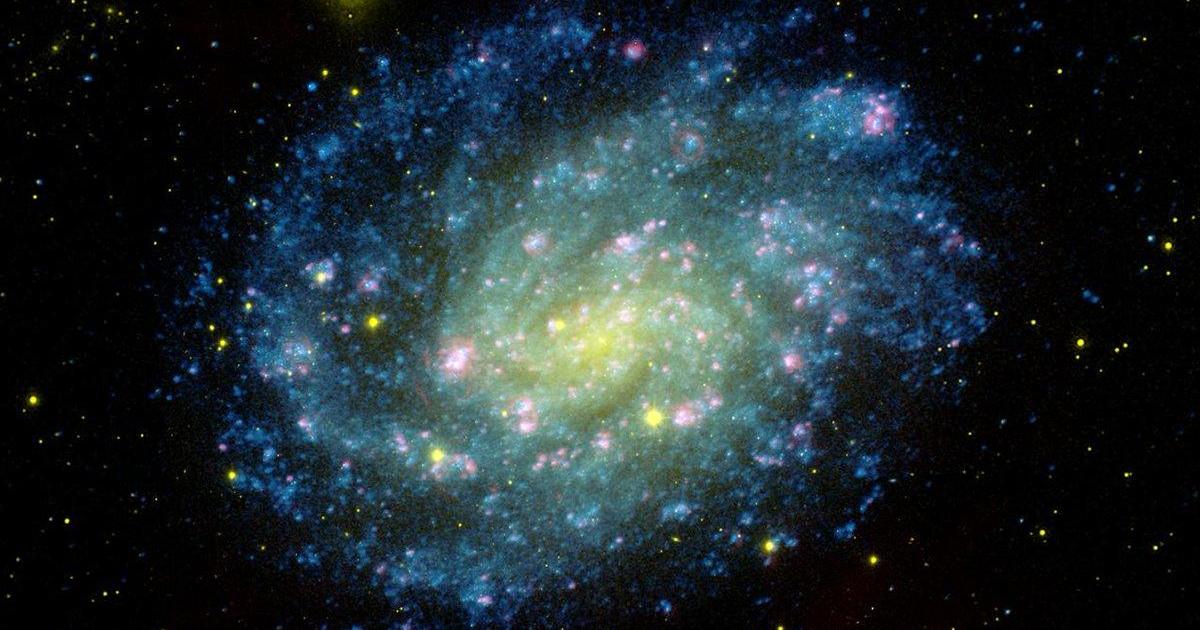The death of Brazilian soccer legend Pelé on Thursday ignited a wave of mourning across the world. And for those at NASA, the 82-year-old’s death even surpassed the realms of the planet.
The space agency tweeted its own tribute for “the legendary Pelé” on Thursday, sharing a mesmerizing photo of a spiral galaxy that depicts the colors of Brazil – green, yellow and blue. The image, captured by the Galaxy Evolution Explorer satellite, shows the galaxy NGC 300 which lies in the constellation Sculptor.
NGC 300, according to NASA, is about 7 million light-years away and is known for its “vigorous star formation.” This particular image was captured in 2005. The blue dots in the outer arms of the galaxy’s spirals are the young stars, while older stars are congregated towards the center in yellow and green colors. The small bursts of pink indicate gases being heated by “hot young stars and shocks due to winds from massive stars and supernova explosions,” NASA said.
Pelé, whom many referred to as “The King,” spent roughly 20 years playing soccer in Brazil, both for the club Santos and the country’s national team. In 1958, he helped lead Brazil to win the World Cup at just 17 years old, making him the youngest world champion of all time. He led his team to two more victories, in 1962 and 1970, becoming the only player to win three of the global tournament.
And his World Cup accolades go beyond the wins themselves. According to FIFA, Pelé is also the youngest person to score in a World Cup game, the youngest person to score a World Cup hat trick and the youngest finalist in the World Cup’s history. His victories led FIFA to name him the greatest player of the 20th century.
Pelé had been undergoing treatment for colon cancer since 2021. The hospital at which he was being treated at the time of his death said Thursday that he died from multiple organ failure.
Thanks for reading CBS NEWS.
Create your free account or log in
for more features.




